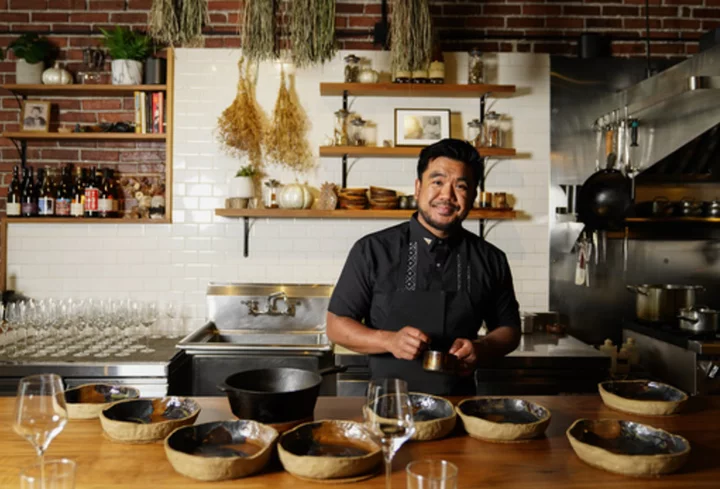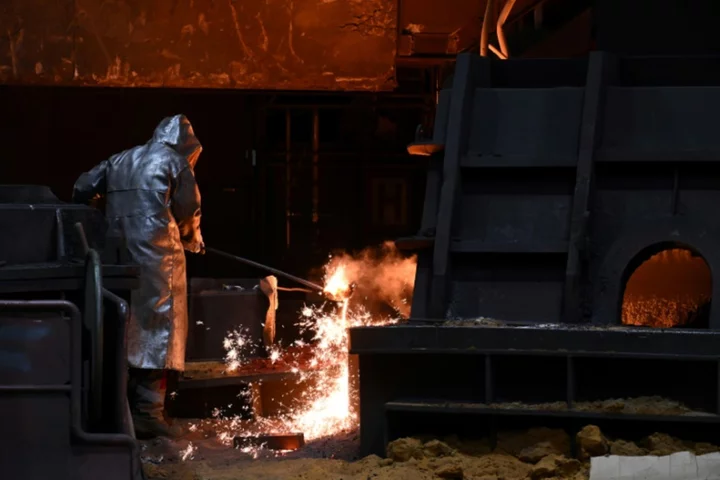Like a lot of chefs, Aaron Verzosa has been hustling the past three years to get Archipelago, his Filipino restaurant in Seattle, through the pandemic and its ripple effects. Getting a James Beard Award nomination was a validating moment.
“Being able to amplify and showcase stories about the Filipino American culture, the communities here, specifically in the Northwest, and really the immigrant story that my parents came with ... I was just very humbled to be able to have the opportunity to showcase what the sacrifice was and be able to represent the region in that way," said Verzosa, who is up for Best Chef: Northwest and Pacific.
In the culinary world, the awards are the equivalent of the Oscars. Three Filipino restaurants will be represented at the James Beard Foundation's annual awards ceremony, on June 5 in Chicago.
Abacá, in San Francisco, scored an Outstanding Pastry Chef or Baker nod for Vince Bugtong. And Kasama, in Chicago, earned a joint Best Chef: Great Lakes nomination for husband and wife Tim Flores and Genie Kwon. Last year, Kasama was nominated for Best New Restaurant and also became the first Michelin-starred Filipino restaurant. Past Filipino American winners include Tom Cunanan, who snagged Best Chef: Mid-Atlantic in 2019 for his now closed Washington, D.C., restaurant, Bad Saint.
All this recognition is welcome praise for a cuisine that has historically been stifled by colonialism and a general lack of appreciation. These chefs are part of a younger generation giving voice to the Filipino American experience through the language of food.
Before joining Abacá in January, Bugtong said he was having an identity crisis as pastry chef for an Oakland cocktail bar. He wanted to do more Filipino-centric desserts, but at the same time felt he lacked authenticity. At Abacá, he said, chef and owner Francis Ang gave him the freedom to explore his culinary roots. He has since experimented with dishes from the Philippines' pre-Spanish days, like rice-based desserts, or kakanin in Tagalog.
“In the small amount of time that I’ve worked here, I definitely learned so much,” Bugtong said.
He enjoys playing around with ingredients from the Philippines. For example, he wants to make a granita with barako coffee, which is grown there, and pair it with muscovado jelly and leche flan ice cream. Leche flan is the Filipino version of creme caramel.
Bugtong doesn’t worry about whether something is unconventional and outside the usual traditions of Filipino culture.
“My thought process when I come up with stuff is, ’Do I like it?'” he said. “Does it represent me as a Filipino American? Then the second thing that I think about is, ‘Is this approachable to other people? Filipino or otherwise?’ And then I think of a composition that makes it aesthetically beautiful.”
In Seattle, Archipelago, named because the Philippines is comprised of 7,100 islands, has been dishing out a seasonal tasting menu since 2018. Verzosa and his wife, Amber Manuguid, wanted a “Pacific Northwest restaurant first and foremost.” But there's a “Filipino American-ness” intrinsic to the meals too.
For instance, Verzosa might swap out tamarind for wild lingonberries. He does his own take on Filipino banana ketchup with sweeter tubers or root vegetables.
With only 12 seats in the restaurant, Verzosa chats with every patron.
“When we have Filipinos coming from the Philippines and we have Filipinos that are here from the U.S. — whether they be first, second, all the way to fifth generation — there’s a really beautiful way to connect with them differently,” Verzosa said.
“I think the most important thing to realize is that there is absolutely — like anything — no one way to be Filipino."
Neither Verzosa nor Bugtong seriously considered a culinary career until after college. Verzosa grew up on a diet of PBS and Food Network cooking shows, as well as the cooking of his father, aunts and uncles.
“I would come home from school, be eating my dad’s food and watching these shows,” said Verzosa, who was originally headed to medical school. “At some point, he was like, ‘Hey, listen, Aaron, if you love eating as much as you do, you need to learn how to love to cook.'"
Bugtong dropped plans to become a teacher and enrolled in a Bay Area culinary school in 2014. As a child, he hadn't demonstrated any passion for making things from scratch.
“I did stuff with Betty Crocker and thought I was badass, like substituting milk instead of water,” Bugtong said, chuckling. “When I was a kid, I used to put egg wash on Chips Ahoy! and bake them. They came out very gooey inside and crispy on the outside.”
Filipinos have heard on and off for the last decade that their food is having a moment, about to be the next big thing in U.S. cuisine. Its staples include steamed rice, meat, fish, and notes of sweet, salty and sour. Dishes like adobo (a meat braised in vinegar, soy sauce and garlic), lumpia (spring rolls) and pancit (fried noodles) are already part of the zeitgeist.
Yet Filipino restaurants make up only 1% of U.S. restaurants serving Asian food, according to a Pew Research Center analysis released earlier this month.
There's no one explanation why other Asian cuisines like Chinese grabbed a bigger foothold in the restaurant industry.
One reason is the “funneling” of early Filipino immigrants into particular occupations, according to Martin Manalansan IV, an American Studies professor at the University of Minnesota, Twin Cities. In the 1920s and '30s, he said, they came to the U.S. for agricultural work. After 1965, they worked mostly in more technical fields like nursing and engineering.
Many young Filipino Americans were discouraged from becoming chefs "because that was seen as very lowly, especially if your parents are nurses, doctors, engineers, whatever," Manalansan said.
In addition, Filipino food was often dismissed as a fusion of Chinese, Spanish and a dash of American. That perception annoys Manalansan because it doesn't recognize the creativity of Filipino culture.
"The late ‘90s foodie revolution was really ... about being adventurous and being called a 'foodie,’ being into more ’exotic,' interesting cuisine,” Manalansan said. “The Filipino cuisine was seen as kind of homey, kind of blasé.”
Whether this year's James Beard love is a coincidence or not, Verzosa says it feels like there are more rising, accomplished Filipino chefs than ever.
“Over the last five, 10 years or so now, they’re finally coming through and developing their own voice, and wanting to showcase their own families, their own communities, their own regions,” Verzosa said.
“Having the craft and ability to make delicious food — obviously that needs to happen to tell those stories.”
___
Terry Tang is a member of The Associated Press’ Race and Ethnicity team. Follow her on Twitter at https://twitter.com/ttangAP









